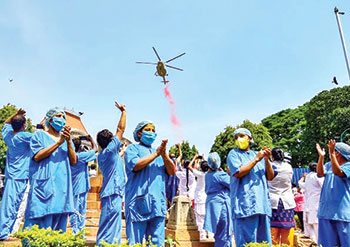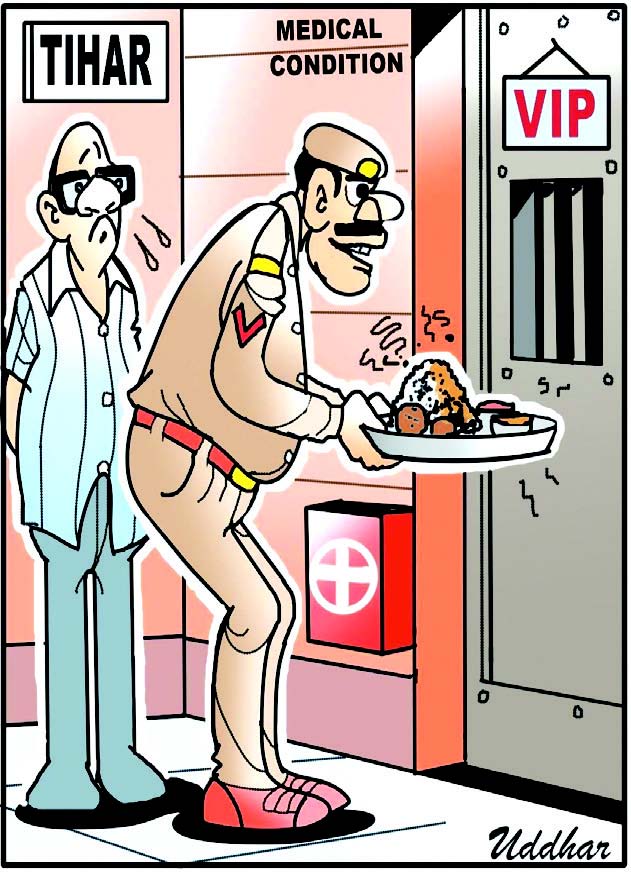
Gladstone D’Costa
WHO calls it “The most severe global health emergency in history”; with the world totally helpless in its vice-like grip. Our ignorance about the disease, much less the remedies, is reflected in the numerous U-turns along the way. We started by denying its existence, dismissed it as a viral pneumonia, then calling it a mysterious unpredictable virus. We declared its structure, only to discover that it can mutate its protein spike to a hairpin structure, confounding immune defences. We were told there were three main symptoms; today the variety of symptoms keep increasing by the day. We still argue about both prevention and cure; patients declared cured and discharged, drop dead on the way home. Science has let us down as never before. Respectable journals published papers only to withdraw them days later. HCQ was useful, not useful, again declared useful by research papers. Other papers made outrageous claims like closing red light areas light areas would reduce the spread (withdrawn later, following indignant protests). Lockdowns were introduced, then lifted, then reintroduced. Meanwhile the numbers infected keep rising, crossing2.26 million, with around 45257 deaths (50% below 60yrs). One cynic posted that more people die daily from hunger across the world; but hunger does not affect the affluent. We are now accused by the Stanford study of substandard data reporting particularly in Goa.
We labelled our healthcare workers “warriors” and “heroes” honouring them with clapping, banging utensils and lighting lamps. But are they heroes or mere scapegoats for the abject neglect of healthcare in general and doctors in particular? In YCM hospital, Pune, a doctor was attacked when a patient admitted in critical condition died. The attack was thwarted by the intervention of other patients, and doctors and nurses rescued from the rooms they had locked themselves in. A doctor was fatally stabbed in Latur. At M.S. Ramaiah hospital, Bengaluru, an ambulance driver was attacked because the patient died. In Warangal, 300 junior doctors went on strike because one of their colleagues was beaten up. The list is endless; but the Home Minister states that doctors do not need any special law to protect them against violence, rejecting a draft for such a law.
In Goa we have our own unique problem. An HoD’s request for leave was turned down after having spent over 100 days on the job without a break. His wife had to go to the HC for redressal. Surely, the health services in Goa are not so bereft of capable doctors to the extent that he cannot be replaced. And surely everyone recognises that it is impossible to work for such long periods without compromising on efficiency; that too draped in full PPE’s. In a simple surgeons’ gown and mask in an operating theatre under controlled conditions, one is often drenched in sweat after a couple of hours of concentrated physical effort. These “warriors” were supposed to work in severely restrictive PPE’s for 6-8 hours on the wards at the mercy of the weather; if and when PPEs were available and of prescribed quality. Was any enquiry instituted when 13 doctors died within 18 days in Bihar? By the time this article goes into print, the death toll amongst “warriors” may well cross 200, most below 50yrs.
The SC has had to intervene even to ensure that frontline doctors’ salaries were released on time and without deductions for virus related sick leave.
Caitríona Coxs’ article on healthcare heroism in the IJME provides deep insights into the “hero” label. Though well intentioned, the label implies healthcare workers are not affected by loss, the difficult decisions and stress of their responsibilities. It is in reality just a convenient way of shifting the blame away from faulty healthcare policies. It implies that doctors have never in the past, voluntarily put themselves at risk in the process of treating epidemics (remember SARS).“Doctors are superhuman, capable and committed to working non-stop”; disregarding their own safety and the safety of their families to serve humanity. This narrative cleverly sidesteps years of neglect of healthcare by successive governments. The pandemic has dramatically, exposed that neglect. Budget allocations for healthcare have always hovered around 1% of GDP. Over the years, this has resulted in grossly inadequate facilities, shortage of hospitals, hospital beds, equipment, doctors and nurses. We have 7 doctors and 17 nurses per 10,000 population as opposed to the global average of 13.9 and 28.6 respectively. Yet we think nothing of a Rs.7crore facelift of the Raj Bhavan in the midst of this crisis.
A poll by “Orth Evidence” assessed the reaction to the use of the term “heroes”. Only 18% fully agreed that it indicated appreciation and recognition the sacrifices made. 45% said it placed unrealistic expectations, 23 % said it downplayed the need for support and14% thought it placed too much responsibility on HCW. The initial approach to the pandemic was political and bureaucratic, rather than medical, losing valuable time. There are surreptitious attempts to introduce controversial measures, like EIA and double tracking railway lines, under the cover of the pandemic. Testing policies are still confused; which kits, who should test and who should be tested. Private labs were strangely excluded, till matters reached a critical stage. . Reserving 20% of beds in private hospitals made no sense at all, being logistically impossible to accommodate positive cases with non-Covid patients under one roof.
No worries; our “heroes” are always available to bail us out, or blame; and like 200 before them, to work to death – quite literally.
(The writer is a founder member of the VHAG)
